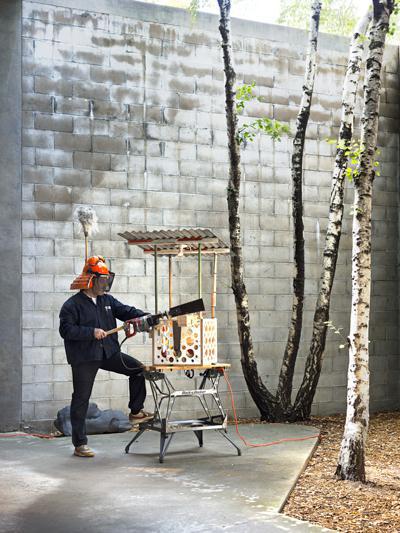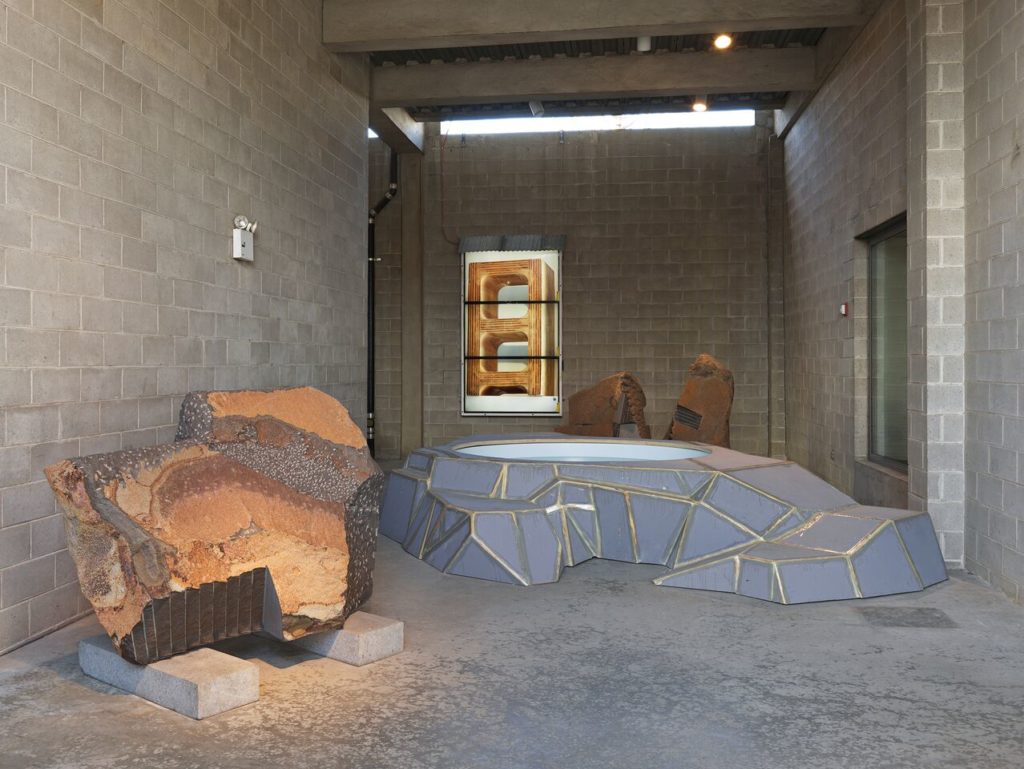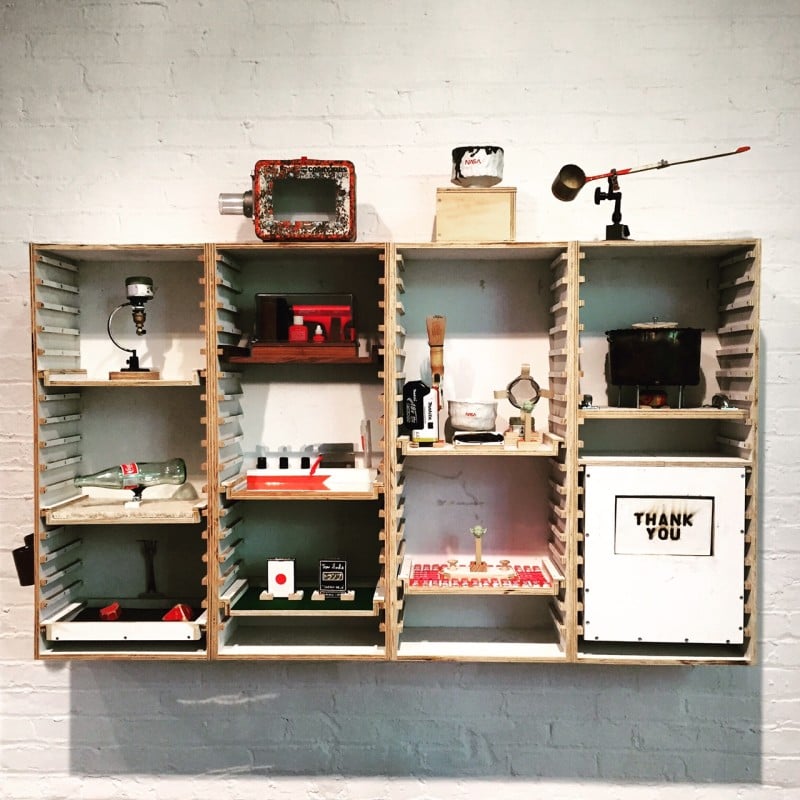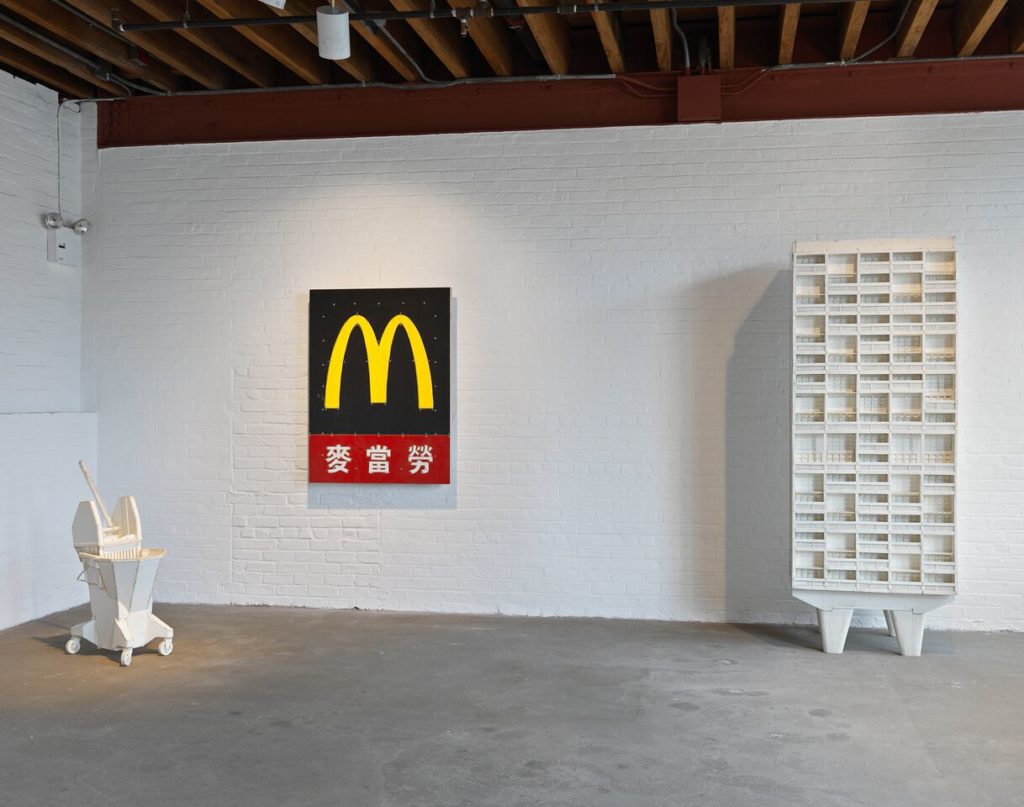Art World
Tom Sachs Brings Yoda to a Confusing Japanese Tea Ceremony at the Noguchi Museum
Isamu Noguchi, meet Tom Sachs.

Isamu Noguchi, meet Tom Sachs.

Cait Munro

“There comes a time in every middle-aged, Jewish man’s life where he comes to the realization that Japan is where it’s at,” says Tom Sachs.
The New York-based artist is standing beside a koi pond he erected at the Noguchi Museum in Queens, in which one exquisite, orange ornamental carp and two large, grey ones swim together in circles. “That’s why you see so many koi ponds and zen gardens and Asian second wives,” he says with a smile. “This whole art project is my Japanese midlife crisis.”
The project-cum-midlife crisis he’s referring to is “Tom Sachs: Tea Ceremony,” a show that’s part traditional survey, part thematic installation, and part thirtieth birthday celebration for the museum, which is dedicated to the work of sculptor Isamu Noguchi. This marks the first solo exhibition of work by another artist at the institution, which runs through July 24.
“Tom is the first artist that we’ve really invited in,” museum director Jenny Dixon said during a press conference. “One has to remember that Noguchi was an extraordinarily forward-thinking artist in his own time. He worked with certain materials, and he stopped working with certain materials, because he always wanted to find new materials. And that’s interesting, because Tom is really working with a lot of the materials of his own time.”
The exhibition’s centerpiece is the outdoor tea garden, which contains several large-scale constructions like a McDonald’s-inspired stupa, a replica of a Boeing 767 bathroom chamber, a traditional hand-washing station (with the option to just use Purell), a Bonsai tree constructed from items like cotton swabs, toilet paper rolls, tampon applicators, and pregnancy tests, and of course, the tea house itself, where Sachs will hold various public and private tea ceremonies over the course of the exhibition with the help of expert Johnny Fogg.

Installation view.
Photo: Genevieve Hanson
The tea garden project asks, according to press materials, that visitors “imagine the Noguchi Museum as a remote and rocky version of the natural sublime, and Sachs as an enterprising, twentysomething-century monk who has built a tea garden here in search of quietude and enlightenment.” Speaking of enlightenment: here in this Sachs-ified version of a tea house, you have exactly 24 seconds to find it before a basketball game-style shot clock goes off, and you must, as Sachs says, “move onto the next activity.” His specific brand of awkward, sometimes offensive humor is peppered throughout the exhibition, to varying degrees of actual humorousness.
Sachs began building the original tea house in 2011, and the first public ceremony took place in 2012 during “Space Program 2.0: MARS” at the Park Avenue Armory in New York. The artist later claimed that if he had to take one element of human culture with him to another planet, it would be either the ancient practice or the rapper Lil’ Wayne.
If this all reeks a bit too much of cultural appropriation, both Sachs and curator Dakin Hart are quick to reassure that the body of work comes from a place of deep respect and admiration for Japanese culture, albeit one inevitably tinged with the artist’s signature tongue-in-cheek humor and transgressive “artbro” aesthetic. An “irreverent-but-respectful take,” the museum has officially dubbed it.

Photo: Cait Munro.
The museum’s interior houses various bricolages and other sculptural works, some of which will actually be used during tea ceremony proceedings, wherein groups of 2-3 people will be invited into the structure for tea, conversation, and entertainment.
Sachs, like Noguchi himself, is very invested in the notion of art objects that serve a larger purpose outside of mere existence—though with many of these objects, it isn’t entirely clear what that purpose is until explicitly detailed. To this end, Sachs and Hart plan to publish an exhibition catalog in the form of a guide to each of the objects and how to employ them during the tea ceremony.
Take, for example, a strangely lifelike sculpture of a lobster crafted from steel vice grips. “In the 19th century, when Samurai culture was being discontinued and swords were made to be illegal, the craft of making Samurai swords and armor was hundreds of years old, and people who had passed it down from generation to generation struggled to survive, so they built these reticulated animal sculptures,” Sachs explains. “And the bronze lobster is sort of the ultimate in that. It’s a fully articulated lobster with, something like 600 parts.”
When asked how the lobster might be employed during a tea ceremony, he says, “If I was trying to communicate long life to a guest.” It is true that the hosts of tea ceremonies do often include specific decorative elements to communicate certain messages to guests, but it also feels like something of a convenient answer—which, it turns out, the artist has a lot of.

Installation view.
Photo: Genevieve Hanson
His various, well-documented artistic obsessions, which include outer space, Americana, consumerism, and luxury branding, are heavily represented throughout the exhibition’s interior rooms. A rack of hundreds of ceramic “pinch pots” are emblazoned with the NASA logo, the ubiquitous McDonald’s golden arches grace one whitewashed wall alongside a row of Japanese characters, and a brazier, used to warm tea, is topped with a tiny bronze Yoda head, rather than the traditional chrysanthemum. The little green philosopher appears again atop two Pez dispensers with unexplained purpose.
“Because Yoda is, of course, the most important representative of Eastern philosophies in America,” explains Hart. “And has been since the 1970s.”
If Yoda represents America’s watered-down, hyper-simplified understanding of Eastern culture, then Sachs’s repeated summoning of him in this context reads like a ploy to make it clear that he’s in on the joke.
“It would be very easy for this project to be another example of cultural appropriation—a white guy stealing someone else’s culture,” Sachs admits. “But when you go all the way, you become part of it. And I feel like after years of building this, I have even more respect for the tea ceremony than when I started. To quote the great Johnny Lydon, ‘you don’t write a song called “God Save the Queen” because you hate the English people. You write it because you love them and you’re tired of watching them be mistreated.'”
It’s unclear how, exactly, that analogy applies here, given that Lydon himself was British. But if you have any lingering questions on the topic (and we imagine that you might), consider consulting the extensive, four-page handout distributed to visitors, which includes a section about cultural appropriation as well as the passage titled “Why ‘Tom Sachs: Tea Ceremony’ at the Noguchi Museum?”
“Sachs employs the strategies of cultural appropriation,” the handout reads. “But, like Batman, he flirts with darkness in order to do good.”